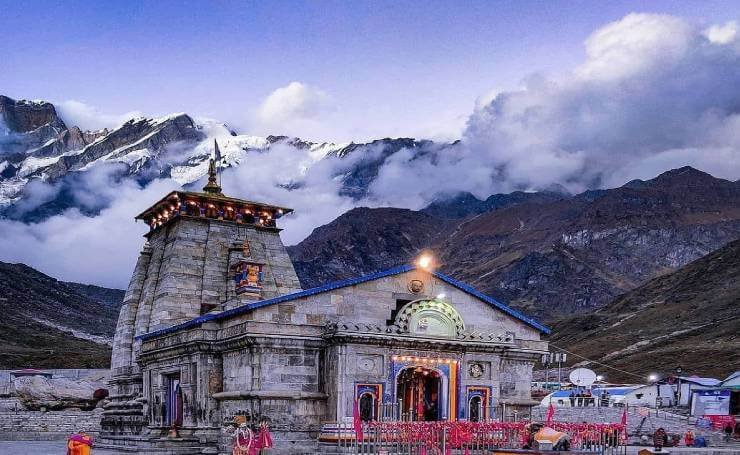Kedarnath Dham: the most beautiful temple in Uttarakhand, has an interesting story where Pandavas received salvation from their sins.


Kedarnath Dham, the highest among the twelve Jyotirlingas in the country, is situated at an elevation of 3581 meters on the banks of the Mandakini River in Uttarakhand. It is the largest Shiva temple in the state, constructed by joining together the stone slabs. The Jyotirlinga is triangular in shape, and according to legend, Lord Vishnu’s avatar Nar and Narayan were meditating on the Kedar mountain peak in the Himalayas. Pleased with their devotion, Lord Shiva appeared and granted them a boon to reside there forever in the form of a Jyotirlinga.
The temple is built on a six-foot-high square platform. There is a circumambulation path around the main portion of the temple, including the mandapa and the garbhagriha. Outside, in the prangana, there is a statue of Nandi the bull, Lord Shiva’s mount. There is no definitive evidence regarding who commissioned the construction of the temple. However, it is said that it was established by Adi Shankaracharya.
To reach Kedarnath, it is necessary to trek for 15 kilometers from Gaurikund. The Kedarnath temple is built in the Katiyuri style. The construction of the temple was primarily done using large gray stones. The temple’s roof is made of wood, and it has a golden Kalash on its spire.
The Kedarnath temple is divided into three parts: the first is the garbhagriha, the second is the darshan mandap where devotees stand in a large courtyard to worship, and the third is the sabha mandap where all pilgrims gather.
The temple for Lord Kedarnath opens only for 6 months a year for darshan and remains closed for the other 6 months. It opens after Vaishakhi and is closed on the day of Padwa (also known as Paruva Tithi) after Diwali. When the 6-month duration is complete, the temple priests light a lamp in the temple, which continues to burn for the next 6 months. When the temple opens again after 6 months, this burning lamp is found.
It is beleived that, during the Dwapara Yuga when the Pandavas won the war of Mahabharata, they were feeling guilty for having killed their own brothers and relatives. They were deeply distressed by their sins and sought redemption by visiting Kashi to seek darshan of Lord Shiva.
However, when Lord Bholenath came to know about this, he became angry and went to Kedarnath. Then Pandavas also followed Lord Bholenath and reached Kedarnath. To save the Pandavas, Lord Shiva took the form of a bull and joined the herd of bulls. Bhima also took his gigantic form and stood with his feet on two mountains. All the animals passed under Bhima’s feet, but Lord Shiva was about to disappear when Bhima caught hold of Lord Bholenath’s back.
Upon seeing the Pandavas’ desire, Lord Shiva was pleased and blessed them with his divine appearance. After this, the Pandavas were freed from their sins. They then had the Kedarnath Temple constructed in this location, where even today, the bull’s hump is worshipped as a symbol of Lord Shiva.
DISCLAIMER: The author is solely responsible for the views expressed in this article. The author carries the responsibility for citing and/or licensing of images utilized within the text.
